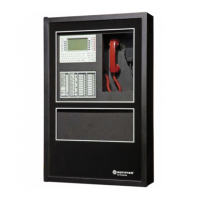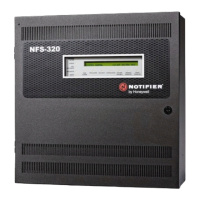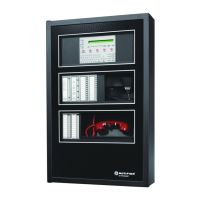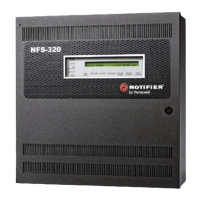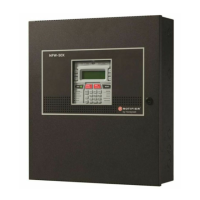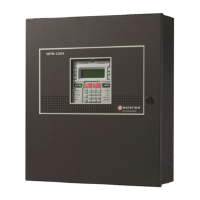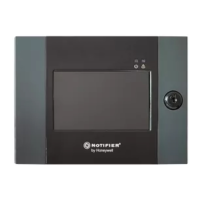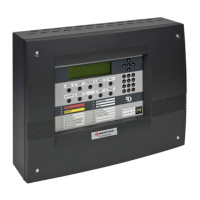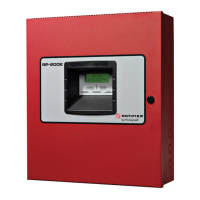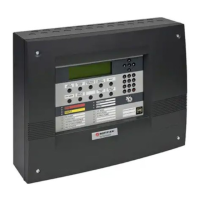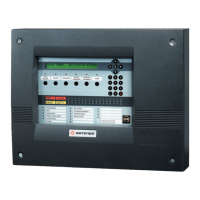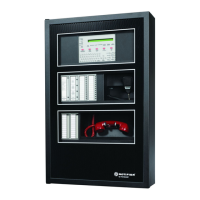
Do you have a question about the Honeywell Notifier NFS2-640 and is the answer not in the manual?
| Brand | Honeywell |
|---|---|
| Model | Notifier NFS2-640 |
| Category | Control Panel |
| Language | English |
Listing of the controls and indicators and where to find information on their use.
The control panel contains 12 labeled LEDs described in Table 2.1.
Use the ACKNOWLEDGE/SCROLL DISPLAY key to respond to new alarm or trouble signals.
Use the SIGNAL SILENCE key to silence the panel sounder and turn off all audio and visual devices.
Use the SYSTEM RESET key to reset the control panel.
Use the DRILL key to manually activate all silenceable outputs and Notification Appliance Circuits.
Use the LAMP TEST key to test the control panel LEDs and the panel sounder.
The programming keypad includes: Function keys, ENTER key, Cursor movement keys, Alphabetic and numeric keys.
This section contains instructions for operating the control panel.
The system operates in Normal mode when no alarms or troubles exist.
Describes how the panel indicates and responds to a fire alarm.
Describes how the control panel operates in Mass Notification mode.
Explains how the system indicates and responds to a system trouble.
Explains how the panel indicates and responds to a security alarm.
Explains how the panel indicates and responds to a supervisory signal.
Explains how the panel indicates and responds to a pre-alarm warning.
Explains how the panel indicates disabled points.
Explains the purpose and operation of non-alarm points.
Explains how the panel indicates and responds to a CO alarm.
Explains how the panel indicates an active trouble monitor point.
Explains how the panel indicates troubles in output circuits.
Explains the operation of system timers like Auto Silence and Alarm Verification.
Explains the operation of a Waterflow circuit when a fire alarm is initiated.
Describes supervised communication methods for addressable devices.
Provides an overview of accessing Read Status functions and menus.
Explains the Read Status function and its capabilities.
Provides step-by-step instructions on how to enter the Read Status function.
Instructions on how to view or print Read Status information.
Provides instructions for viewing status of devices, zones, and system settings.
Instructions on viewing event and alarm history.
Instructions for printing points, event history, and alarm history.
Instructions for viewing and printing hidden event and alarm history.
Contains information for operating the control panel with special zones.
Explains the purpose of Releasing Zones.
Covers control panel time, date, and holiday functions.
Provides an overview of NAC coding.
Describes Presignal and PAS selections and operations.
Details various functions of intelligent detectors.
Describes panel communication with remote terminals.
Details the three operating modes for the CPU EIA-232 PC/Terminal port.
Shows how to perform Read Status functions from a CRT-2.
Shows how to perform Alter Status functions from a CRT-2.
Lists point troubles and their descriptions and actions.
Lists system troubles and their descriptions and actions.

